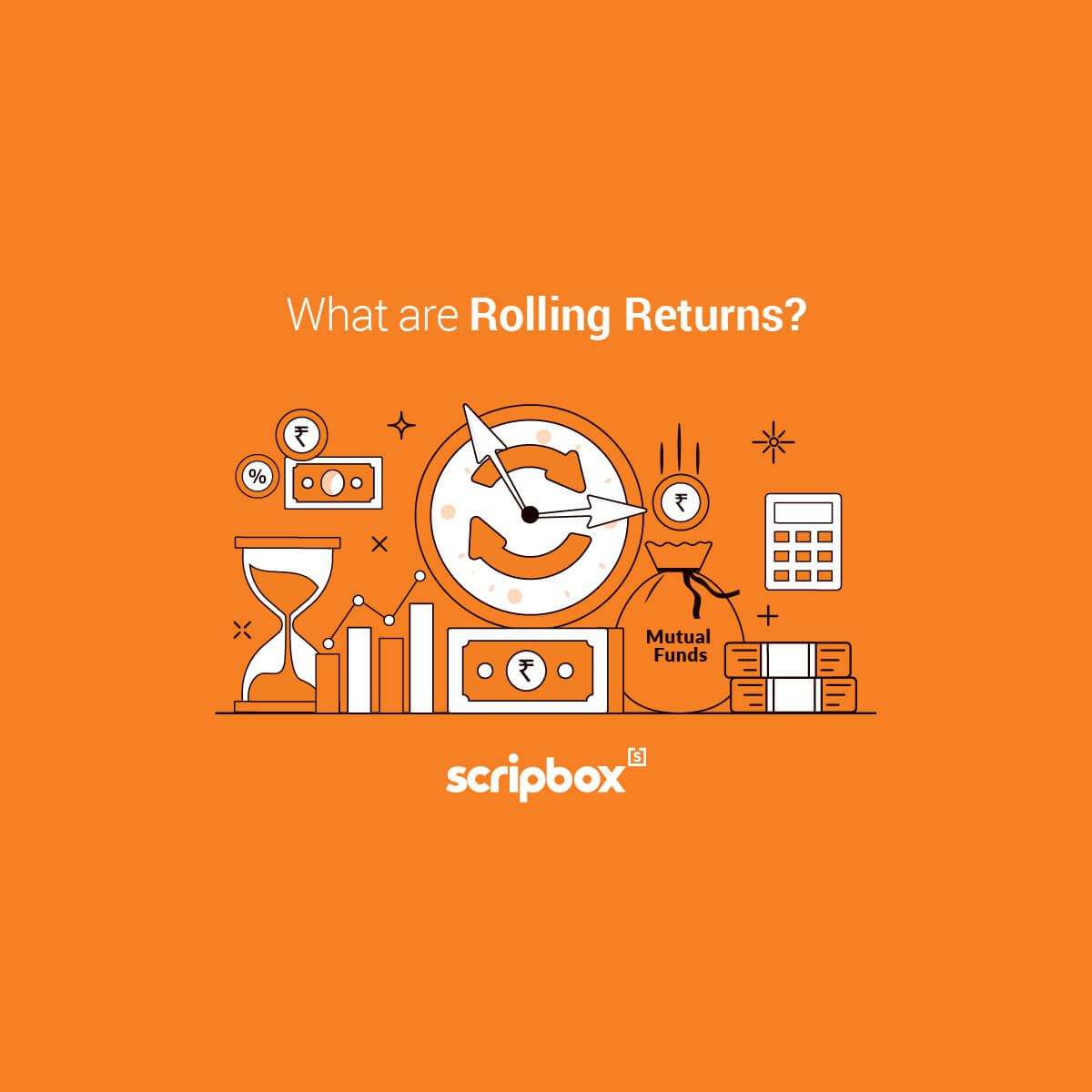What is Treynor Ratio in Mutual Funds?
The Treynor ratio is an essential ratio for evaluating mutual funds. It measures the excess return over the risk-free return to the market risk that an investment portfolio can earn. In other words, it measures the excess return per unit of market risk undertaken by the portfolio. Thus, it is also known as the reward-to-volatility ratio because it shows how the investor is rewarded for the systematic risk undertaken. It is represented as –
Treynor Ratio = (Portfolio returns – Risk free rate of return)/Portfolio beta value.
The excess return the investor earns is over and above the risk-free returns. The risk-free investment return is considered to be a treasury bill or government security. For instance, if the treasury bills have a return of 3.5% and the portfolio provides a return of 9.5%, then the excess return is 6%.
However, this portfolio undertakes a certain degree of systematic risk to achieve excess returns. This market risk is measured through Beta. Beta measures the degree of change in returns a fund exhibits in response to market volatility. If the beta value of the portfolio is high (or more than one), it is highly volatile, and vice versa.
This ratio was developed by Jack Treynor, an eminent economist and one of the founders of the Capital Asset Pricing Model.
Importance of Treynor Ratio in Mutual Funds
The following is the importance of the Treynor ratio in mutual funds –
- It helps the fund manager to assess the portfolio performance and makes changes accordingly.
- It helps to gauge whether the investment is worth the risk.
- Investors can evaluate the performance of each fund.
- It helps fund managers to manage systematic risk.
- The objective of this ratio is to conduct the risk-reward evaluation.
- Treynor ratio, along with Sharpe ratio and Jenson’s alpha, are used to rank the performance of mutual fund portfolios.
How To Calculate Treynor Ratio in Mutual Funds?
This ratio measures how efficiently the fund manager is able to create a balance between risk and return of the portfolio. Because it uses beta in the denominator, the investor must know that beta indicates the sensitivity of the fund returns to the movements of the underlying benchmark. Therefore, the beta of funds that invest in highly volatile stocks would be higher than that of less volatile stocks. Also, stocks that are highly volatile risk rise and fall faster with the market rally and slump, respectively.
The Treynor ratio in mutual funds can be calculated using the following formula –
TR = (Rp – Rf)/𝛃p
Where
Rp – risk associated with the portfolio
Rf – risk free rate
𝛃p – beta of the portfolio
Example
| Fund A | Fund B | |
| Portfolio Return | 13% | 16% |
| Risk Free Rate | 6% | 6% |
| Beta | 0.9 | 1.5 |
| Treynor ratio | (13%-6%)/0.9 = 7.78 | (16%-6%)/1.5 = 6.67 |
In the above case, Fund A provides better risk-adjusted returns than Fund B. Although Fund B seems to be a better choice due to its high returns, but higher returns are due to the higher risk taken by the fund.
Therefore, while comparing two funds, it is ideal to choose a fund with a higher Treynor ratio as it is better at compensating for the risk-taking in comparison to the other fund with a lower Treynor ratio.
Interpretation of Treynor Ratio
The Treynor ratio is beneficial in decision-making while selecting the appropriate mutual funds. When comparing the mutual fund, investors calculate this ratio to evaluate which portfolio offers more returns for every unit of risk. If they yield similar returns, a higher Treynor ratio is better. However, investors must use this ratio based on the portfolio size and type.
In case of a well-diversified portfolio, the risk will be low, and the total risk will be similar to the market risk. Thus, the Treynor ratio and Sharpe ratio will yield similar results, i.e. they will rank funds in the same order.
However, in case of a non-diversified portfolio, the market risk will be a better measure of risk. Also, both ratios will rank differently. Thus, the Treynor ratio will consider the non-diversifiable element of risk and give the additional risk-adjusted performance.
By adding the new fund to the portfolio, the Treynor ratio will reduce. It means that the new fund has only increased the portfolio riskiness without contributing to the overall portfolio returns. Thus, investors must reconsider the decision of adding a new fund to their portfolio.
Limitations of Treynor Ratio
Even though this ratio is a method to analyse and find better-performing investments, it does not work in several cases. The following are the limitations of the this ratio –
- This ratio is calculated based on historical data. Also, it represents the historical information of the mutual fund scheme. However, this information may not be relevant to present-day investment decisions because there is no guarantee of the fund behaviour in present and future. Moreover, if the fund management style changes, the ratio may lose its meaning.
- This ratio does not guarantee the performance of the scheme in the future. The returns depend on macroeconomic factors, and if these factors change, returns are also affected. Thus, in these scenarios, investors may not profit for every unit of risk undertaken, as depicted by the Treynor ratio.
- It does not provide meaningful and relevant values if the beta coefficient of the fund is negative.
- While comparing mutual funds, a high ratio is better, but it does not guarantee the same proportionate increase in the return-generating potential of the scheme. For instance, if two funds have a Treynor ratio of 3 and 5, respectively, it does not mean that the second fund will offer twice the return as the first one.
What is the Difference between Treynor Ratio and Sharpe Ratio?
The following table shows the difference between Treynor Ratio and Sharpe Ratio.
| Parameter | Treynor Ratio | Sharpe Ratio |
| Measures | Risk-adjusted returns of a portfolio based on beta | Risk-adjusted returns of a portfolio based on standard deviation |
| Nature of Risk | Systematic risk | Unsystematic risk |
| Risk Set Off | Cannot be set off by diversifying | Through diversification |
| Suitability | Assess a well-diversified portfolio | Assess all types of portfolios |
Frequently Asked Questions
While comparing this ratio for different portfolios, a higher ratio is considered to be a good Treynor’s ratio for investment decisions.
The beta coefficient measures the degree of risk of a security/portfolio in relation to the market as a whole. The higher the beta, the more volatile the security or the portfolio and vice versa.
If the Treynor ratio is negative, it means that the fund has performed worse than the risk-free instrument. However, this ratio is not used when it is negative because it is harder to interpret.
- What is Treynor Ratio in Mutual Funds?
- Confused if your portfolio is performing right enough to meet your goals?
- How long have you been investing in mutual funds?
- What is your current portfolio size?
- What is your approximate annual household income?
- Your profile does not qualify for a call with a Financial Expert.
- Importance of Treynor Ratio in Mutual Funds
- How To Calculate Treynor Ratio in Mutual Funds?
- Interpretation of Treynor Ratio
- Limitations of Treynor Ratio
- What is the Difference between Treynor Ratio and Sharpe Ratio?
- Frequently Asked Questions























Show comments